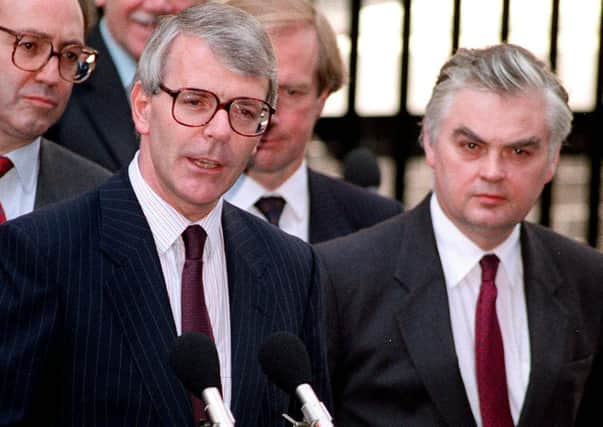Coronavirus: Why we shouldn’t dismiss talk of ‘green shoots’ – Bill Jamieson


When all else fails clutch at straws. That will have been the reaction of many when one of the Government’s health experts earlier this week lauded the appearance of “green shoots” of recovery from the coronavirus crisis.
Seldom has an expert observation on the epidemic so far been greeted with massive hedging and qualification. It was positive news we all desperately wanted to hear. Was this not an altogether welcome sign to bring us to our doorsteps banging saucepan lids?
Advertisement
Hide AdAdvertisement
Hide AdBut across the country, you could almost hear the mocking guffaws of scepticism.
His remark came as the daily death toll hit a record 381 and experts questioned whether the Government had a credible route out of the lockdown. Latest Office for National Statistics figures suggested that almost one in four coronavirus deaths were occurring outside hospitals, so went uncounted in data published by NHS England.
In Scotland, Tuesday brought the largest daily rise in Covid-19 related deaths with the death toll now at 76 north of the border. Meanwhile, the Edinburgh Festival and Fringe events, drawing 4.4 million people each August, have been cancelled for the first time in 70 years.
Now add to this the furore over the failure to carry out mass testing due to a shortage of chemical reagents. Public health experts insist mass testing is the only sensible way to ease lockdown conditions. But daily testing stood at just over 8,200 on Tuesday, short of the 10,000-a-day target.
Amidst all this, Stephen Powis, medical director of NHS England, said there had been a “bit of a plateau” in the number of people testing positive for coronavirus, which could be a sign that the UK is seeing a slowdown in its spread. There was some cause for hope that social distancing is working, because of the relatively flat numbers of people testing positive. He talked of “green shoots” – but he cautioned that there were “only green shoots and we must not be complacent and we must not take our foot off the pedal”.
A field day for satirists
The very mention of “green shoots” sparks apprehensive resonance for many. Those with long memories will recall how Norman Lamont when chancellor in the depths of a sharp recession in October 1991, said he detected “the green shoots of economic spring are appearing once again”.
But companies kept going under and lay-offs intensified. In the press, he was torn to pieces. Satirists had a field day and the phrase became the butt of jokes for months.
But as it turned out his observation was right – and economists were later to regard that period as marking the turning point for recovery. Not that it helped Mr Lamont much because after the ERM debacle he was like a man dangling on a noose. Some 18 months later, with the offer of a Cabinet demotion, the chair was kicked away and the trap door flung open.
Advertisement
Hide AdAdvertisement
Hide AdHowever, Gavyn Davies, then chief economist at Goldman Sachs, wrote at the time of Lamont’s removal from the Treasury that the “green shoots” speech had turned out to be “remarkably prescient. From that moment onwards, output stopped declining, and within a few months, it started to rise. Estimates of GDP show the trough of the recession occurring in the fourth quarter of 1991, with sustained growth resuming in the third quarter of 1992, when GDP grew 0.4 per cent compared to the second quarter”.
It certainly didn’t feel like that at the time. A mood of bleak despair was to cover the country well into 1992.
Heavy caveats
For all the many examples of false dawns, I am inclined to be sympathetic to the ‘green shoots’ thesis, having witnessed many occasions when our fortunes turned just when we least expected it – the recovery from the global financial crisis amid widespread predictions of the end of capitalism is a recent example.
This should not blind us to the evidence that the economy will suffer a severe and painful recession before recovery sets in. Whole industries are being decimated. Economists have warned the hit to the global economy is likely to be worse than the financial crisis, with predictions that growth will shrink 2.8 per cent this year, compared to a 1.7 per cent drop in 2009. An accountancy network predicts that between 800,000 and a million firms nationwide may soon have to close. Many firms also report that banks have refused them emergency loans.
Now come flickering signs that the rate of increase in coronavirus infection may be slowing. This is bounded by heavy caveats on test deficiencies and differences in counting methodology, with estimates that the proportion of Covid-19 victims who would have died anyway of other causes could be “as many as half or two-thirds”.
We are in the bleakest of periods for this country since the war. But we may be close to a turning point.
